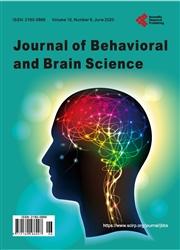Mathematical Model for Stroke and White Matter Hyperintensities
引用次数: 0
Abstract
A mathematical model was developed to predict the risk of having a stroke as a person ages. The age component was derived from the concept that the change in risk of stroke with age is a function of the current risk of developing a stroke. This equation modeled the trend with age reported in the literature for two different data sets with R 2 values of 0.97 or better for both men and women. A second equation of a similar nature was developed to predict the accumulation of white matter hyperintensities, WMH, as a person ages. It appears that each equation includes a set of common risk factors. This set of common risk factors allows an individual’s risk for stroke to be based on measured WMH. A third equation links WMH with the risk of developing a stroke. This equation allows an individual to use measured WMH from brain scans to predict the future risk of developing a stroke. In theory, a person with a relatively high measurement of WMH can project future risk for stroke with age and use counter measures such as exercise and medications to keep other risk factors low as a person continues to age.脑卒中和白质高信号的数学模型
人们建立了一个数学模型来预测随着年龄增长中风的风险。年龄因素源于中风风险随年龄变化的概念是当前中风风险的函数。这个方程模拟了两个不同数据集的年龄趋势,男性和女性的r2值都为0.97或更高。第二个类似性质的方程被开发出来,用来预测随着年龄增长白质高强度(WMH)的积累。似乎每个方程都包含了一组常见的危险因素。这组常见的危险因素使个人中风的风险以测量的体重为基础。第三个等式将WMH与患中风的风险联系起来。这个公式允许个人使用脑部扫描测量的脑内mh来预测未来患中风的风险。理论上,一个WMH测量值相对较高的人可以预测未来随着年龄的增长中风的风险,并使用对抗措施,如运动和药物,使其他风险因素在一个人继续变老的过程中保持低水平。
本文章由计算机程序翻译,如有差异,请以英文原文为准。
求助全文
约1分钟内获得全文
求助全文

 求助内容:
求助内容: 应助结果提醒方式:
应助结果提醒方式:


